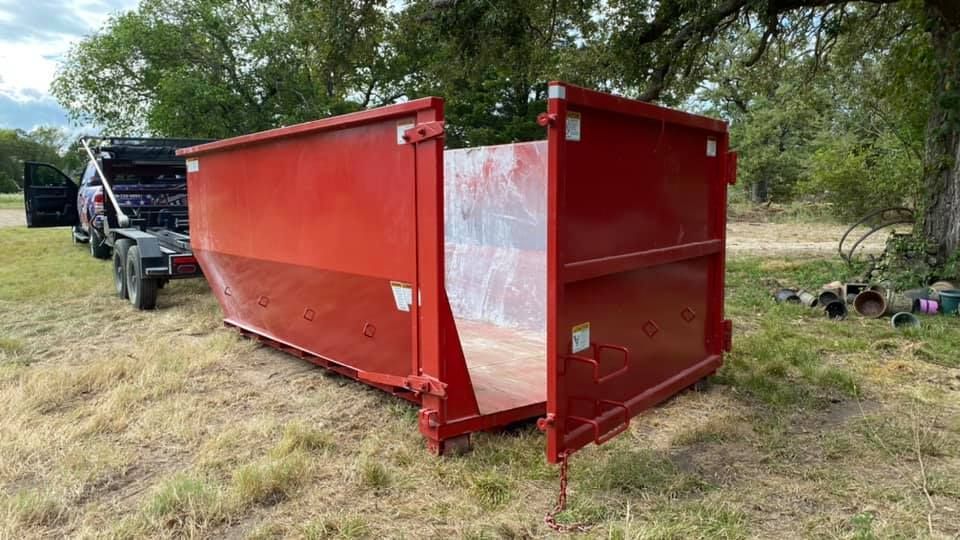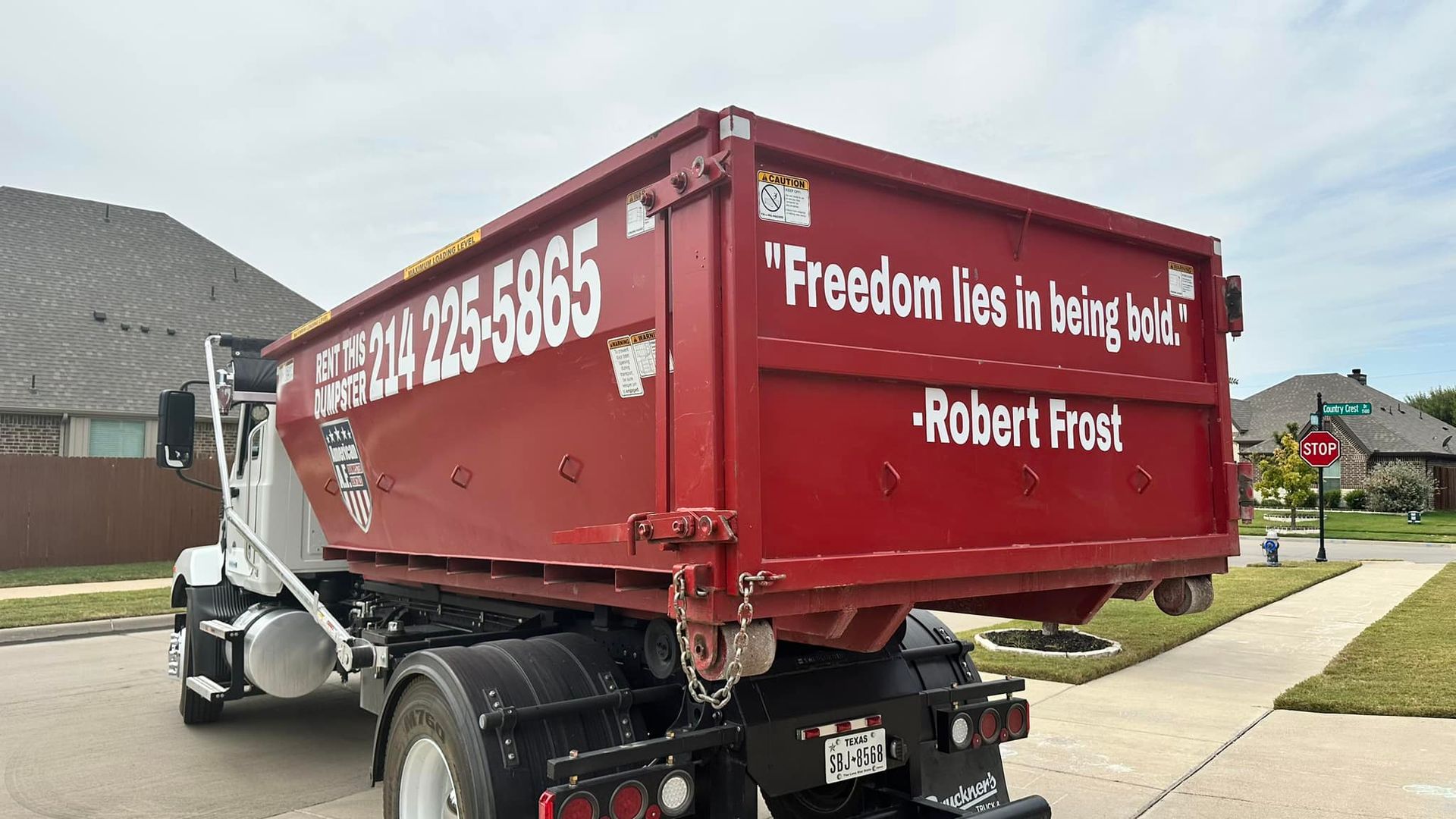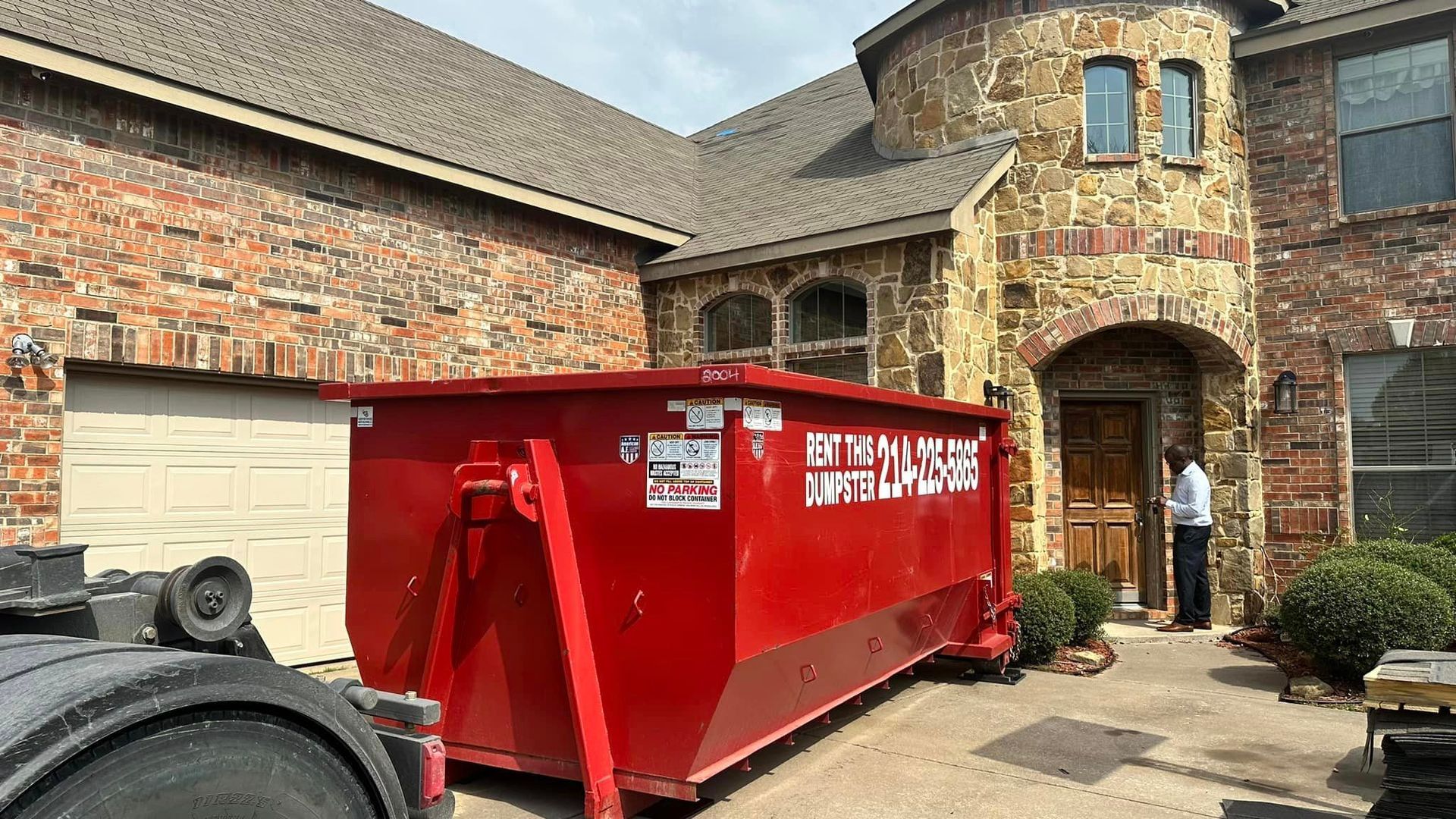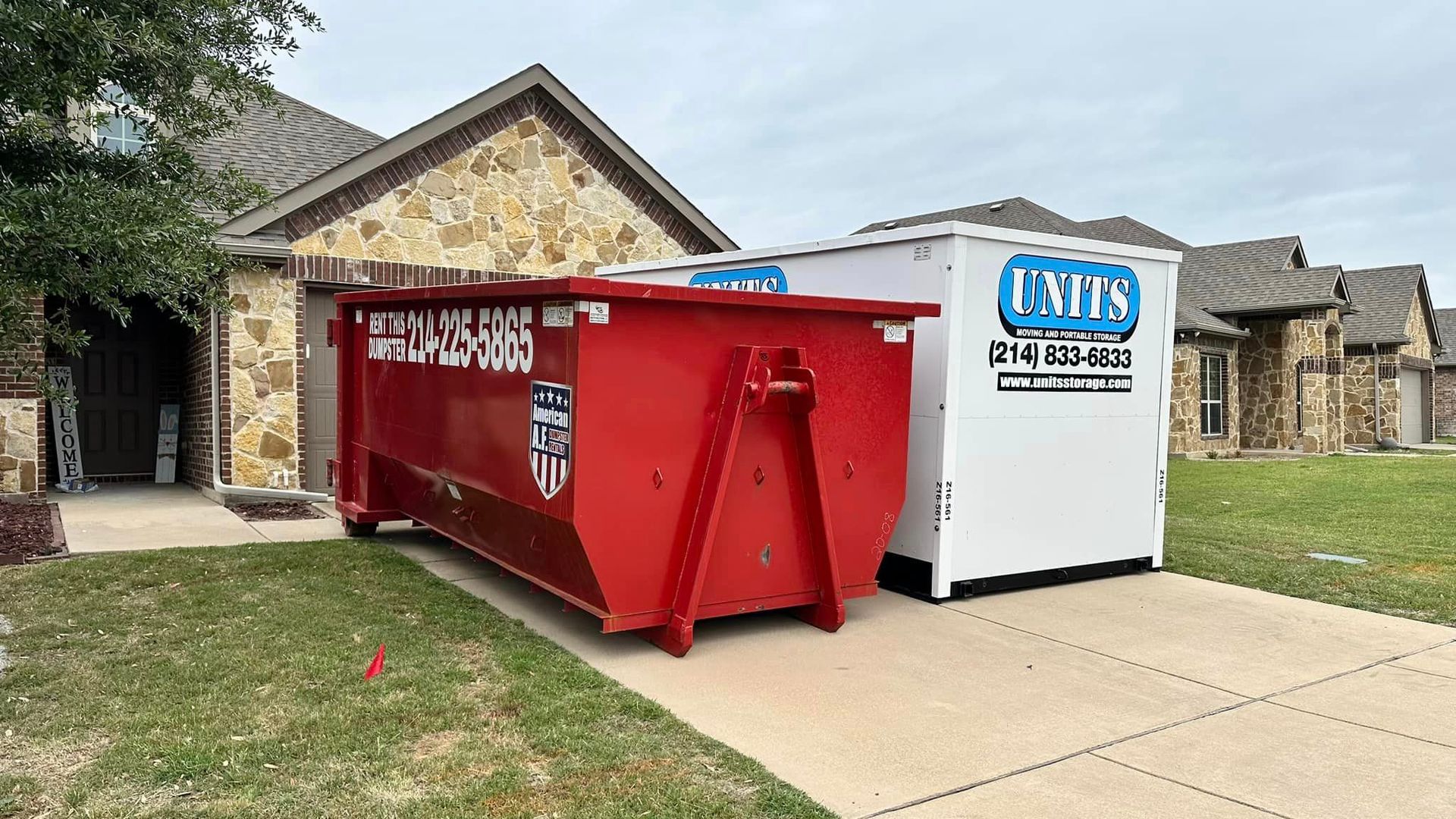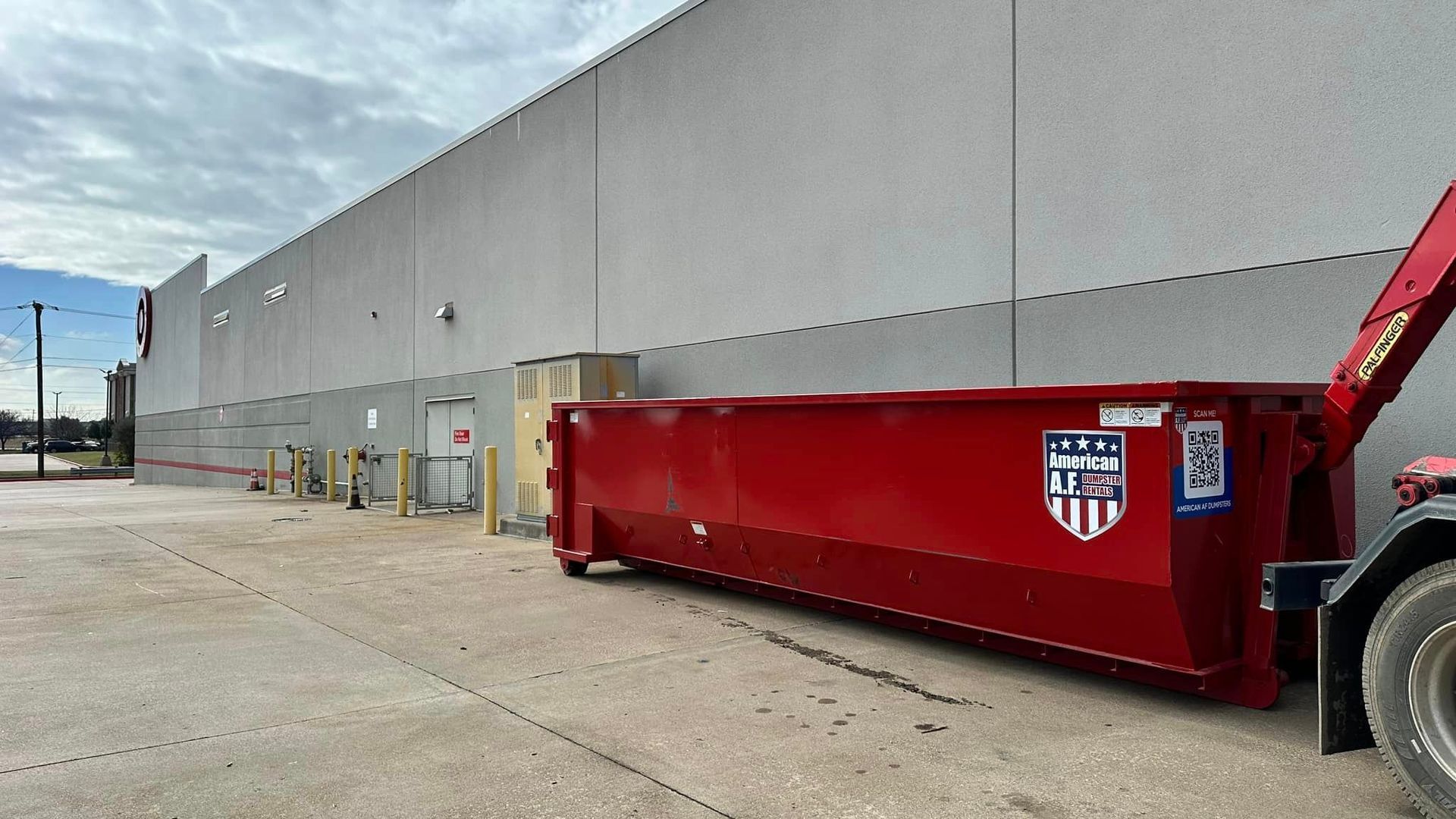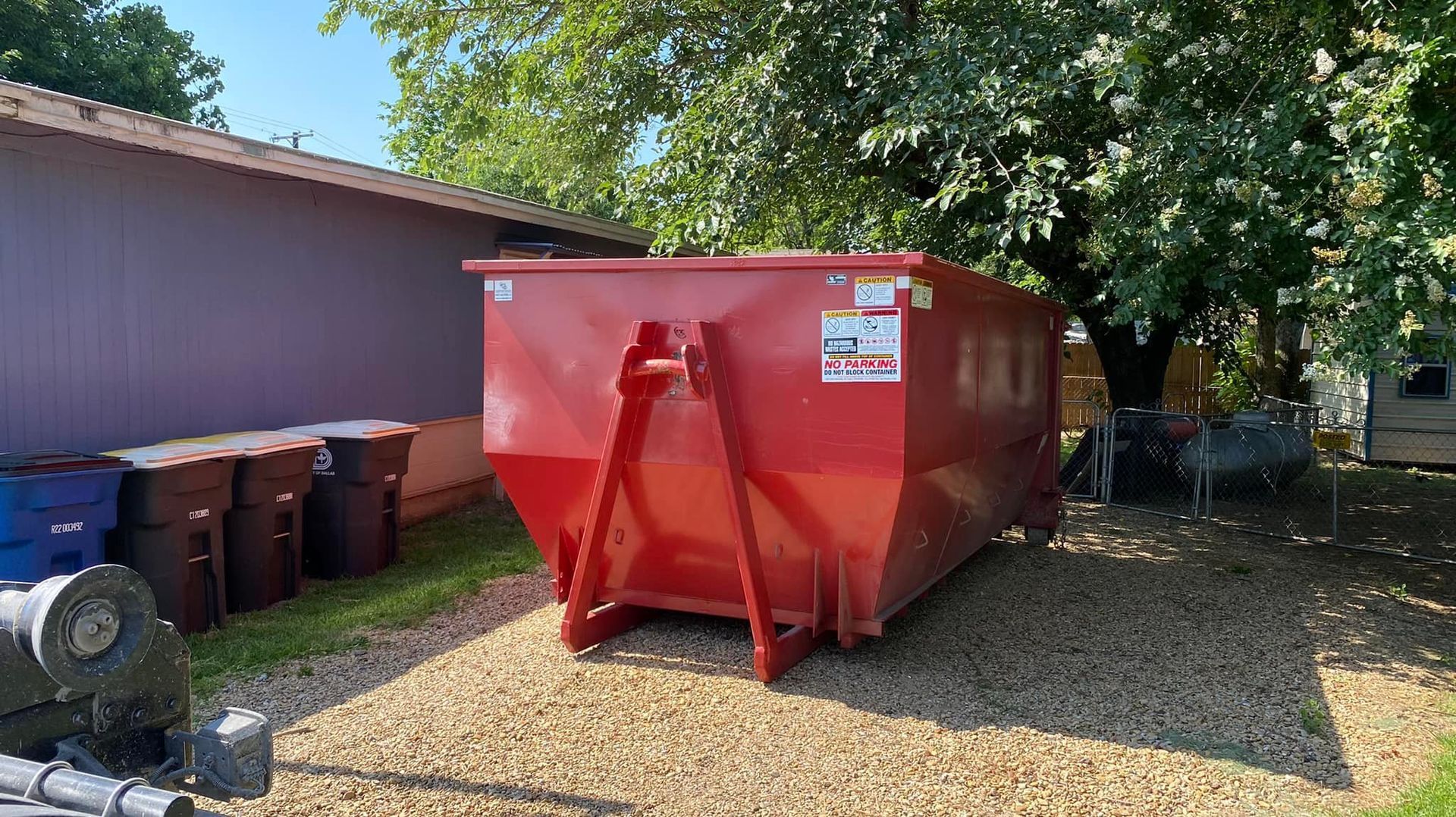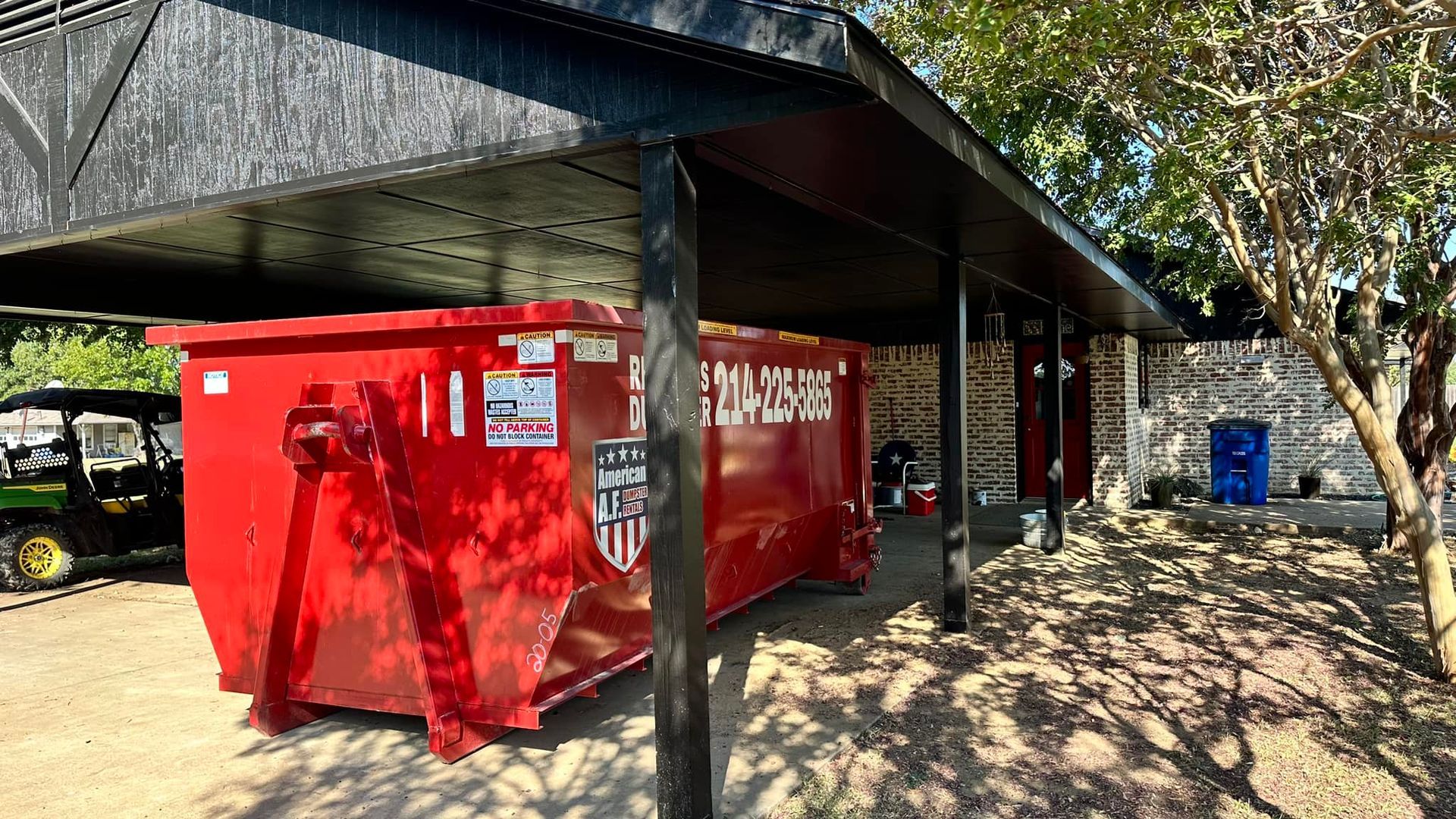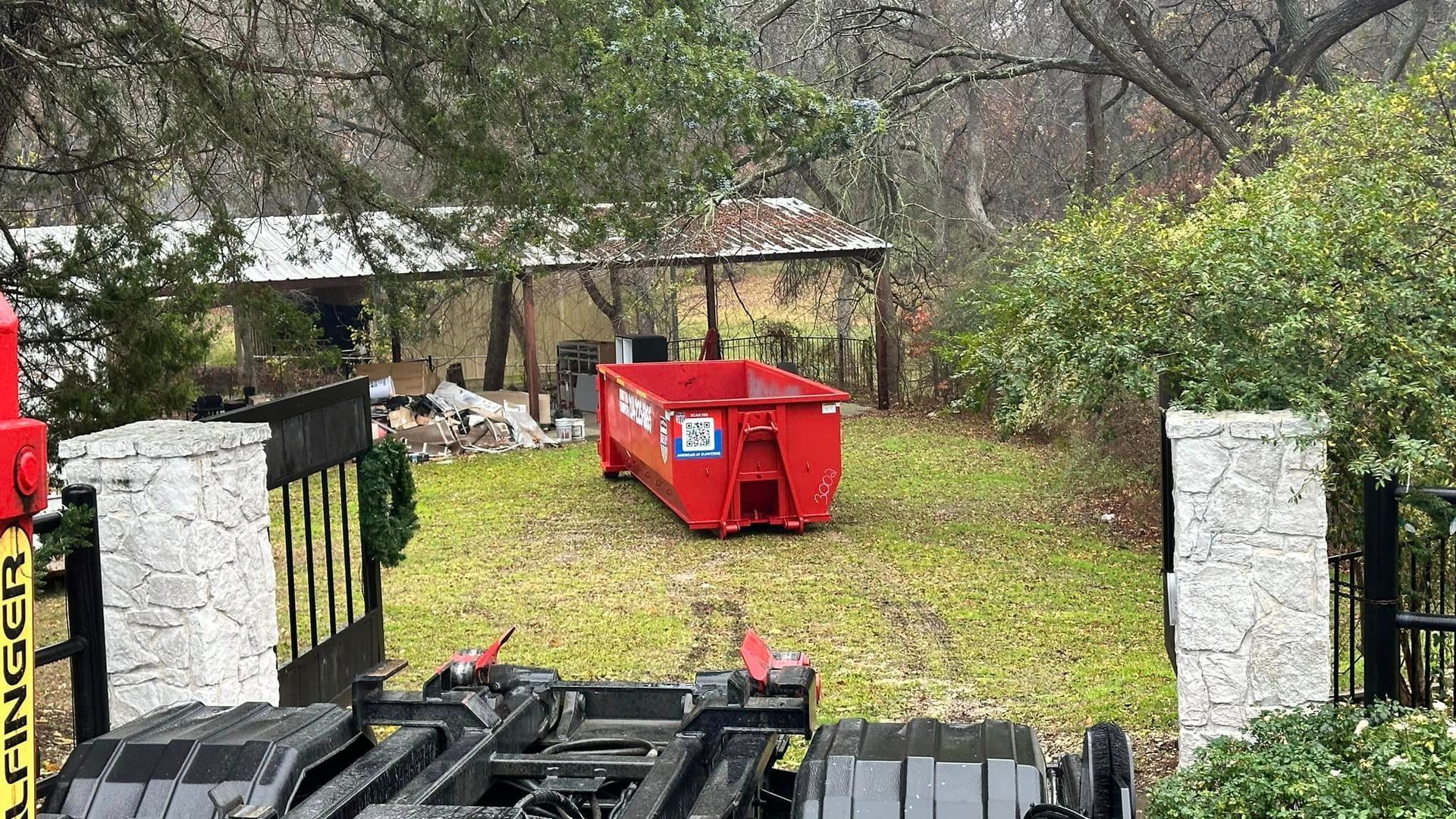What Is A Cubic Yard? - Our Calculation Guide
What Is a Cubic Yard?
A cubic yard is a standard unit of volume used in the United States. It is defined as the volume of a cube with each side being one yard (three feet or 36 inches) in length. This measure of volume is widely used in industries like construction, landscaping, and waste removal to quantify materials like concrete, topsoil, and debris.
How Much Is a Cubic Yard?
Measure the Area
Measuring the area in square feet or square yards is the first step in determining the volume of material required for a project. This measurement is essential whether you're laying down landscape material, pouring concrete, or filling a dumpster with debris.
Calculate the Volume
Calculating the volume involves multiplying the area by the height (or depth), which is typically measured in inches.
For example, to fill a space with a cubic yard of material, you might need to know how many inches of depth are required. This calculation is crucial in determining the amount of material needed, whether it's a cubic yard of topsoil for a landscaping project or concrete for construction work.
Utilizing a Cubic Yard Calculator for Precise Estimations
Online cubic yard calculators are invaluable tools for converting measurements like square footage into cubic yardage. These calculators can accommodate various shapes and sizes, providing a more accurate estimate than a rough estimate done manually.
For more tips on accurate measurement in landscaping and construction projects, read ‘How to Determine Cubic Yards’.
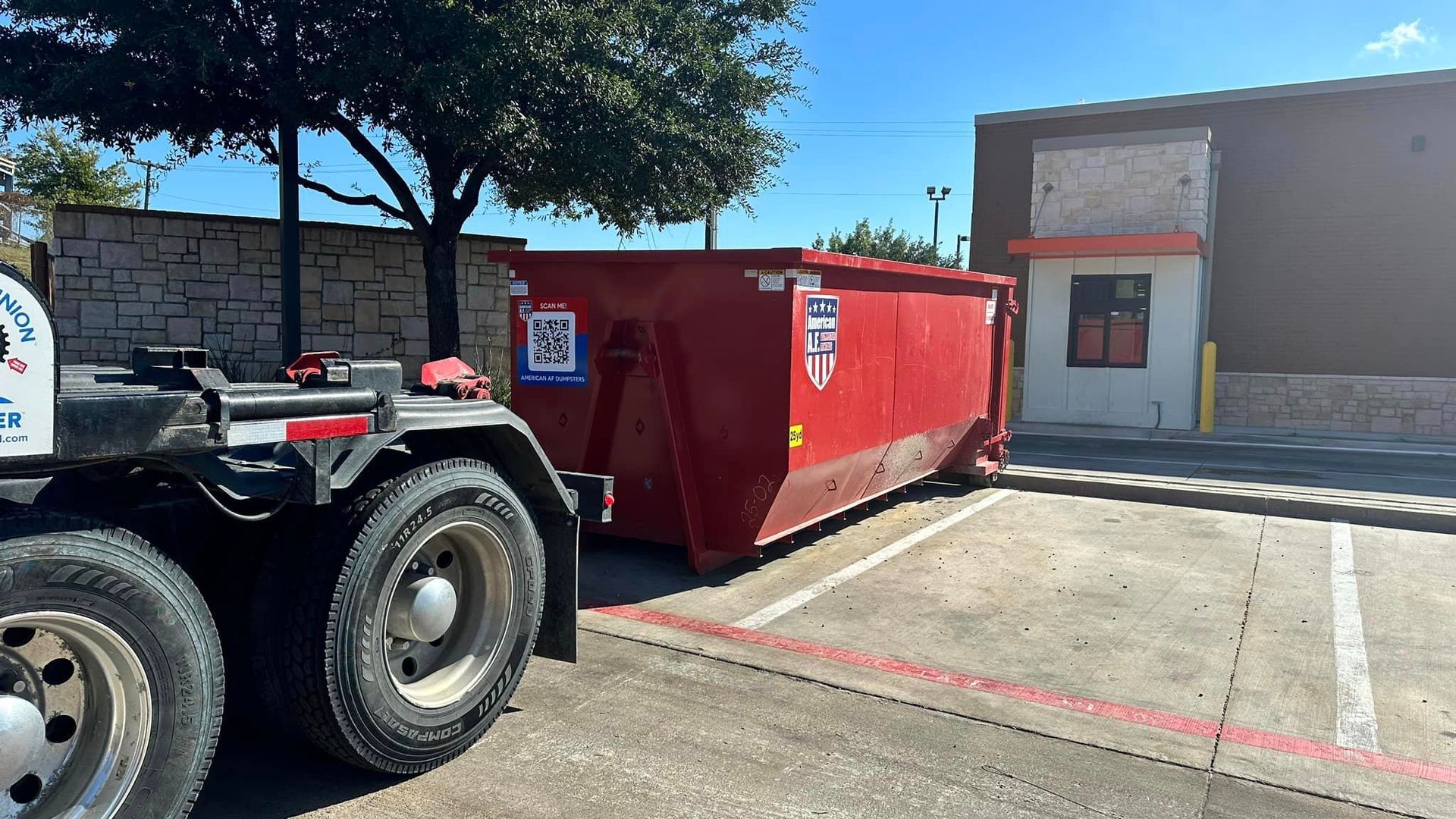
NEED A DUMPSTER?
How Big Is a Cubic Yard?
How Much a Cubic Yard Weighs by Debris Type
The weight of a cubic yard can vary significantly based on the type of material. For example, a cubic yard of dry leaves will weigh much less than a cubic yard of gravel. This information is particularly important when considering the weight limit of a cubic yard dumpster rental.
Understanding the Volume of a Cube in Practical Terms
The volume of a cube, when applied to dumpster rentals, helps in estimating the right size dumpster for your project. For instance, knowing the cubic yardage can determine whether a standard or large dumpster is needed.
Practical Uses of Cubic Yards in Junk Removal
Estimating Cubic Yardage for Different Types of Waste
In the realm of junk removal, accurately estimating the cubic yardage of waste is essential for selecting the appropriate dumpster size. This process typically involves measuring the dimensions of the debris pile and converting these measurements into cubic yards. An online cubic yard calculator can facilitate this process, but having a general idea of the cubic yardage of common waste materials can also be immensely helpful.
Household Junk
- Furniture:
A standard sofa can take up approximately 1 to 1.5 cubic yards. A mattress might use up about 0.5 to 1 cubic yard, depending on its size.
- Appliances:
Items like refrigerators or washing machines generally occupy around 1 to 2 cubic yards each.
- Boxes of Miscellaneous Items:
A medium-sized moving box typically holds about 0.03 cubic yards. Therefore, a stack of 30-40 boxes could fill up about 1 cubic yard.
Yard Waste
- Leaves and Grass Clippings:
Compressed, a cubic yard of leaves or grass clippings can weigh between 300 to 500 pounds. Uncompressed, this material can take up much more space, so it's important to factor in whether the waste will be compacted.
- Branches and Limbs:
A pile of branches can vary greatly in size, but a heap approximately 3 feet high by 3 feet wide by 3 feet deep would constitute about 1 cubic yard.
Construction and Renovation Debris
- Drywall:
One sheet of drywall can occupy about 0.5 cubic feet. Therefore, around 54 sheets would fill a cubic yard.
- Concrete:
Due to its weight, concrete is usually measured by the ton. However, a cubic yard of broken-up concrete can weigh around 2,025 pounds, equating to just over a ton.
- Lumber:
A stack of 2x4 lumber measuring 4 feet high, 4 feet wide, and 8 feet long would be approximately 1 cubic yard.
- Roofing Shingles:
A standard bundle of asphalt shingles (about 33.3 square feet) occupies roughly 1 cubic foot. Therefore, approximately 27 bundles would fill a cubic yard.
- Carpet:
Rolled up, an average room's carpet (about 300 square feet) might take up around 1 cubic yard.
Understanding these estimates can help in making more informed decisions about dumpster sizes. It's important to note that the weight of the material also plays a crucial role, especially for heavy materials like concrete, where weight limits of the dumpster must be considered alongside volume capacity.
For more precise calculations, especially for irregularly shaped items or mixed debris, using an online
cubic yard calculator is recommended. This tool can account for the various shapes and densities of materials, providing a more accurate estimate.
The Role of Cubic Yards in Dumpster Rentals
Understanding cubic yards is essential in dumpster rentals. Dumpster sizes are typically described in terms of cubic yards, with common sizes ranging from 10 to 40 cubic yards. This helps in determining the right size dumpster, based on the volume of the cube of waste to be disposed of.
Online Tools and Calculators for Cubic Yard Estimations
Navigating Online Calculators for Volume and Area Measurements
Online calculators simplify the process of converting measurements like square footage or cubic feet to cubic yards. These tools are particularly useful when dealing with irregular shapes or when needing to estimate the volume of material in cubic inches or cubic meters.
Square Footage to Cubic Yards: A Step-by-Step Online Conversion
Using an online cubic yards calculator, you can easily convert the area measured in square feet to cubic yards. This is particularly useful in determining the amount of landscape material or construction debris needed for a project.
Unique Challenges in Measuring and Estimating Cubic Yards
Calculating the Cubic Yardage of Irregular Shapes
Estimating the cubic yardage of irregular shapes can be challenging, often requiring a more nuanced approach than simple length x width x height calculations.
Estimating the Volume of Material in Various Units
In some cases, you may need to convert the volume of material from cubic inches or cubic meters to cubic yards, depending on the project requirements or industry standards.
Real-World Examples
Determining the Right Size Dumpster in Cubic Yards
Choosing the correct dumpster size is crucial for efficient and cost-effective waste removal. A common mistake is underestimating the amount of waste, leading to the need for additional dumpsters and increased costs. To avoid this, consider these real-world scenarios:
- Home Renovation Projects:
For a small bathroom remodel, a 10-cubic yard dumpster is often sufficient. This size can typically hold about 50-60 4x8-foot sheets of drywall, or the equivalent in mixed renovation debris.
- Large Construction Sites:
Large projects, like building a new house, may require a 30 to 40-cubic yard dumpster. These sizes can hold the equivalent of approximately 180-240 4x8-foot sheets of drywall or a similar volume of mixed construction materials.
- Yard Clean-Up:
For yard waste, such as branches, leaves, and grass clippings, a 10 to 15-cubic yard dumpster is usually adequate for most residential yard clean-ups.
Using a typical wheelbarrow as a reference can be helpful. Since a standard wheelbarrow holds about 0.1 cubic yards, you can gauge how many wheelbarrow loads would fit into a dumpster. For example, a 10-cubic yard dumpster could hold around 100 full wheelbarrow loads.
How Many Bags of Material Equal a Cubic Yard?
Standard trash bags typically hold about 3 to 4 cubic feet of waste. This means it takes about 6-9 standard bags to make up a cubic yard. Understanding this conversion is particularly useful in several contexts:
- Household Cleanouts:
When clearing out a garage or attic, you can estimate the number of trash bags and then convert this to cubic yards to decide on the dumpster size. For example, if you end up with 50 trash bags of junk, this would be approximately 5.5 to 8.3 cubic yards.
- Event Cleanup:
After a large event, if the waste is primarily in trash bags, counting the bags can give you a quick estimate of the dumpster size needed. For instance, 100 bags of party waste would need a dumpster of around 11 to 16.7 cubic yards.
Gain further insight into effective project management in construction and waste removal with
How to Calculate Cubic Yards.
Expert Tips for Accurate Cubic Yard Measurement
The Best Way to Estimate Cubic Yards for a Large Cleanout Project
Estimating cubic yards for large cleanout projects, such as estate cleanouts, extensive home renovations, or commercial property cleanups, requires a strategic approach. Here are some expert tips:
- Visual Assessment:
Start by visually assessing the volume of the waste. Compare it to known sizes, like the bed of a pickup truck (typically 2-3 cubic yards) or a standard wheelbarrow (about 0.1 cubic yards).
- Use Categories:
Break down the waste into categories (e.g., furniture, construction debris, yard waste) and estimate each category separately. Different materials have different space requirements.
- Account for Bulky Items:
For bulky items like furniture or large appliances, measure the dimensions and convert to cubic yards. Remember, these items may not compact well, requiring more space.
- Layering Strategy:
Consider how the items can be layered in the dumpster. For instance, flat items like plywood or drywall can be laid at the bottom, while bulkier items can be placed on top.
- Overestimation is Key:
It's generally better to overestimate the cubic yardage slightly. This approach accounts for the irregular shapes of items and potential underestimation of volume. Renting a slightly larger dumpster can be more cost-effective than renting a second one.
Challenges in Measuring Cubic Yards: From Theory to Practice
Measuring cubic yards in real-world scenarios can be complex due to the irregular shapes and varying densities of materials. Here are some challenges and ways to address them:
- Irregular Shapes:
Many items won’t fit neatly into a cubic space. For these, estimate the largest dimensions and treat them as a rectangular prism for calculation purposes.
- Material Density:
Different materials have different densities. For example, a cubic yard of feathers will be much lighter and more compact than a cubic yard of concrete. Adjust your calculations based on the type of material.
- Compaction Factor:
Consider the compaction factor of the material. Materials like soil or gravel will compact more in a dumpster than materials like branches or furniture.
- Professional Assistance:
When in doubt, consult with the dumpster rental company. They often have experience in estimating the size needed based on the type and volume of material.
- Documentation and Photos:
Documenting the junk or debris with photos can help the rental company provide a more accurate recommendation for dumpster size.
By taking these tips into account, you can greatly improve the accuracy of your cubic yard measurements, ensuring that your dumpster rental is both efficient and cost-effective.
Key Takeaways: Understanding and Utilizing Cubic Yards
Definition and Importance of a Cubic Yard:
- A cubic yard is a standard unit of volume in the United States, representing the space within a cube with each side measuring one yard (or three feet).
- It's widely used in construction, landscaping, and waste removal to quantify materials.
Basic Calculations for Cubic Yards:
- Measure the area in square feet or yards to start calculating the volume of material needed.
- Multiply the area by the height (or depth) to calculate the volume, with depth often measured in inches.
- Use an online cubic yard calculator for more accurate and hassle-free estimations.
Weight Considerations:
- The weight of a cubic yard varies significantly based on the material type, influencing the choice of a dumpster rental.
Practical Applications in Junk Removal:
- Accurate estimation of cubic yardage is crucial for selecting the right dumpster size.
- Common waste items, like furniture, appliances, and yard waste, have approximate cubic yardage values that can guide estimations.
Choosing the Right Dumpster Size:
- Dumpster sizes are described in cubic yards, with common sizes ranging from 10 to 40 cubic yards.
- Real-world examples, such as home renovations or yard cleanups, provide context for choosing the appropriate dumpster size.
Online Tools and Navigating Calculations:
- Online calculators are invaluable for converting square footage or other measurements to cubic yards, especially for irregular shapes or mixed materials.
Expert Tips for Estimation:
- For large projects, overestimation is preferable to avoid the need for additional dumpsters.
- Consider the project's nature, including the types of waste and their density, when estimating cubic yards.
- Professional consultation and visual documentation can aid in obtaining more accurate estimates.
Closing Thoughts
Understanding the concept of a cubic yard and how to calculate it accurately is fundamental in fields like waste management, landscaping, and construction. By applying these key takeaways, you can make more informed decisions regarding material estimation and dumpster rental, leading to more efficient project management and cost savings.
FAQS
-
How Many Cubic Feet Are in a Cubic Yard?
One cubic yard is equal to 27 cubic feet. Understanding this conversion is important when estimating the volume of material required for projects, as measurements may be given in either cubic feet or cubic yards.
-
How Do I Convert Square Feet to Cubic Yards?
To convert square feet to cubic yards, first convert the area to cubic feet (length x width x height) and then divide by 27. This conversion is particularly useful in landscaping projects where depth is a factor.
-
What’s the Difference Between a Yard and a Cubic Yard?
A yard is a linear measure equal to 3 feet, while a cubic yard measures volume. It’s important to understand this distinction when ordering materials, as a yard of material (linear) is different from a cubic yard of material (volume).
-
How Many Cubic Yards Can You Fit in a Pickup Truck?
The capacity of a pickup truck is often measured in cubic yards. A typical full-size pickup truck can hold about 2 to 3 cubic yards of material, depending on the size of its truck bed.

Powered by MagnateProSEO
All Rights Reserved | American AF Dumpsters

